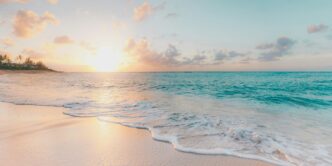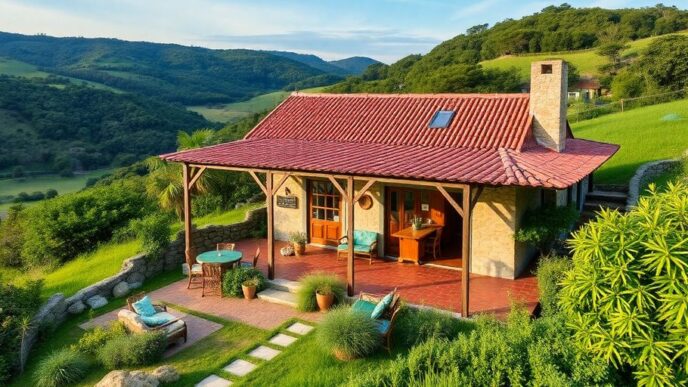Choosing the Best Time for Your Portugal Vacation
Planning the perfect Portugal vacation starts with picking the right time to visit. Portugal’s good weather makes it a year-round destination. However, the best times to visit are during the spring and fall. These seasons offer mild temperatures and fewer crowds.
Seasonal Weather Considerations
Portugal’s weather varies by region. The southern Algarve region has hot summers, perfect for beach lovers. Central areas like Lisbon and Porto enjoy a mild Mediterranean climate. The islands, such as Madeira and the Azores, have a temperate maritime climate, keeping the scenery lush year-round.
Festivals and Events to Attend
Portugal hosts many festivals throughout the year. Spring and summer are packed with events. For example, Lisbon’s Festas de Lisboa in June is a must-see. Porto’s São João Festival is another highlight. These events offer a glimpse into Portuguese traditions.
Crowd Levels and Peak Tourist Seasons
Summer is the peak tourist season in Portugal. Beaches and cities are crowded, and prices are higher. Spring and fall are less crowded and more budget-friendly. Winter is the least crowded but can be rainy, especially in the north.
Crafting the Ideal Portugal Itinerary
Creating the perfect Portugal itinerary requires careful planning. Start by identifying the must-visit cities and regions. Lisbon, Porto, Douro Valley, Nazaré, Sintra, Algarve, Madeira, and Azores offer diverse and memorable travel experiences. Balance urban and rural experiences to get a full taste of Portugal. Explore Lisbon’s vibrant city life and then relax in the serene Douro Valley.
For different trip durations, consider these sample itineraries:
- 3 Days: Focus on Lisbon and Sintra.
- 7 Days: Add Porto and Douro Valley.
- 10 Days: Include Algarve and Nazaré.
- 2 Weeks: Explore Madeira and Azores.
Tailor your trip to your interests and travel pace. This ensures an unforgettable Portugal vacation.
Essential Travel Tips for a Smooth Portugal Vacation
Planning a trip to Portugal? Here are some essential tips to ensure a smooth vacation. Make sure to check the visa and entry requirements before you travel. This will help you avoid any last-minute surprises at the airport. Health and safety should be a priority. Always carry a basic first-aid kit and be aware of local emergency numbers. Travel insurance is highly recommended. It can save you from unexpected expenses and provide peace of mind. Follow these tips to enjoy a hassle-free trip to Portugal.
Exploring Lisbon: A Must-See Destination
Lisbon is a city full of charm and history. It’s the capital of Portugal and the largest city in the country. The city is known for its historic architecture and beautiful tile-covered buildings. You’ll find many hills and narrow streets, making it a unique place to explore.
Top Attractions in Lisbon
Lisbon offers many attractions that you must see. Visit the Castle of St. George for a glimpse into the past. The 16th-century UNESCO Belem Tower is another must-see. Don’t miss the Sé de Lisboa Cathedral and the chance to listen to traditional Fado music.
Best Neighborhoods to Stay In
Choosing the right neighborhood can make your stay in Lisbon even better. Alfama is known for its old-world charm and narrow streets. Bairro Alto is famous for its nightlife and vibrant atmosphere. Chiado offers a mix of shopping and historic sites.
Local Cuisine and Dining Spots
Lisbon’s food scene is something you shouldn’t miss. Try local dishes like bacalhau and pastéis de nata. The city has many dining spots, from street food to fine dining. Don’t forget to explore the local markets for fresh produce and unique finds.
Discovering Porto: The Gem of Northern Portugal
Porto is one of Portugal’s most colorful cities. Spend some time getting lost and meandering the narrow alleyways and steep staircases that lead to the scenic Douro River. Hop on a river cruise, visit the iconic Lello & Irmão bookstore, tour the museums, and visit the surrounding Duoro Valley and its many vineyards (this is the region where port wine comes from, hence the name). It’s also one of the main launching points for the famous Camino Portugues hike that leads to Santiago de Compostella in Spain.
Northern Portugal
Home to Porto and the Douro Valley, the northern Portugal is lush, green, and picturesque. It has an idyllic coastline with lovely beaches, charming mid-sized cities such as Braga and Guimarães, a remote, gorgeous interior (Peneda Geres National Park and Montesinho Park are both here), and tiny stone villages that appear as if stuck in time, hidden deep in the Tras-os-Montes area.
Check out these awesome Places & Cities in Portugal to Visit!
NORTH
Northern Portugal is most notable for being home to the Unesco World Heritage Site of Porto and the Douro Valley. This region is where Portugal was founded in the 12th century. Plus, it’s famous for being the home of port and Douro wines. This is a river valley region and you’ll find some outdoor activities in this area like hiking and riverboat rides.
CENTRAL
view trip ⤍
8 days
Porto and the North of Portugal: off the beaten track
From Porto, you’ll discover the most fascinating parts of Northern Portugal: go on a hike through unique biodiversity around the Paiva river, take a jeep tour through the slopes of the Serra da Arada and taste the wonderful wines of the Douro valley.
view trip ⤍
12 days
The best of Portugal: Lisbon, Porto and the Algarve
Porto area
Porto and the surrounding region provide a bit of everything for travelers. In Porto city proper you have the typical walking, food, and historical tours while nearby you have historic cities like Braga and Guimarães, excellent outdoors activities in Peneda-Gerês park, wine-focused experiences and stunning views in the Douro valley, and great beaches backed by cute towns along the coast.
Leonor Tito offers a range of unique experiences in and around Porto.
Lisbon area
Navigating Transportation in Portugal
Public transportation in Portugal is reliable and affordable. Major cities like Lisbon and Porto have extensive networks of trains, trams, and buses. Tickets usually cost between 1.20 and 1.50 EUR. Regional trains are often cheaper and connect many towns and cities. For longer journeys, consider using the robust train network run by Comboios de Portugal or bus services like FlixBus and ALSA.
Renting a car offers flexibility, especially for exploring rural areas. However, public transportation can be more economical and eco-friendly. Trains and buses cover most major destinations. If you choose to rent a car, be aware of toll roads and parking fees.
Portuguese roads are generally in good condition. Highways are well-maintained and provide easy access to different regions. Use GPS for navigation and be cautious of narrow streets in older towns. Always follow local traffic rules and speed limits.
Indulging in Portuguese Cuisine
Portugal’s cuisine is often considered one of the best worldwide. There’s so much variety and intense natural flavors that I recommend you buy larger jeans in preparation for your waistline swelling a bit while you’re here! From the traditional Bacalhau to the Pastel de Nata, or the Algarvian Seafood Cataplana, you’ll have many reasons to extend your stay.
Enjoying Portugal’s Stunning Beaches
Portugal’s beaches are a sun-kissed paradise. With over 1,500 kilometers of coastline, there’s a beach for everyone. From thrilling water sports near Ferragudo to leisurely beach hopping, the coastline offers endless fun. Whether you want to bask in the summer sun or explore hidden coves, Portugal has it all.
Shopping in Portugal: What to Buy and Where
Popular Souvenirs and Local Products
When in Portugal, pottery and ceramics are must-buys. The town of Corval in Alentejo is famous for these. Sardines, especially from Lisbon’s sardine tourist store, make for a quirky gift. Olive oil, bottled by local producers, is another great souvenir.
Best Shopping Districts
For designer bargains, visit Portugal’s weekly markets. Lisbon and Porto’s malls and shopping districts are ideal for quality designer clothes. Don’t miss a private tour of Evora and Arraiolos, where you can shop for the famous handmade carpets of Arraiolos.
Tips for Bargaining and Shopping Etiquette
Always have some Euro cash on hand, though credit cards are widely accepted. Portugal uses tap to pay frequently, with Visa being the most accepted card. When shopping, remember to be polite and respectful, as this is part of the local customs.
Cultural Etiquette and Local Customs
Understanding Portuguese Traditions
- Always greet people with a handshake or a kiss on both cheeks.
- Address people with their titles, such as Mr. or Mrs., followed by their last name.
- When visiting churches, dress modestly. Women should avoid showing shoulders, and men should wear long pants.
Do’s and Don’ts for Tourists
- Do be punctual for social events, but expect some flexibility with time.
- Don’t wear beachwear in restaurants or supermarkets. It is considered tasteless and offensive.
- Do bring cash, especially in smaller denominations, as some places may not accept cards.
- Don’t expect large tips. Rounding up the bill or leaving 10% is usually sufficient.
Language Tips and Key Phrases
Learning a few Portuguese phrases can go a long way. Here are some basics:
- “Olá” (Hello)
- “Por favor” (Please)
- “Obrigado” (Thank you)
- “Desculpe” (Sorry)
Using these phrases shows respect and can make interactions smoother.
Booking Accommodations for Your Portugal Vacation
Finding the right place to stay in Portugal can be challenging. Here are some tips to help you out.
Conclusion
Planning the perfect vacation to Portugal might seem like a big task, but with the right tips and tricks, it can be a breeze. From exploring the vibrant streets of Lisbon to relaxing on the sunny beaches of the Algarve, Portugal offers something for everyone. Remember to plan ahead, stay flexible, and immerse yourself in the local culture. Whether you’re savoring delicious Portuguese cuisine or discovering hidden gems, your trip to Portugal is sure to be unforgettable. So pack your bags, follow our guide, and get ready for an amazing adventure!
Frequently Asked Questions
What’s the best time to visit Portugal?
The best time to visit Portugal is during the spring (March to May) or fall (September to October) when the weather is pleasant and there are fewer tourists.
Do I need a visa to visit Portugal?
If you’re from the U.S., Canada, or the EU, you don’t need a visa for stays up to 90 days. Always check the latest requirements before you travel.
What are the must-visit cities in Portugal?
Lisbon, Porto, and Sintra are must-visit cities. Each offers unique experiences from historic sites to beautiful landscapes.
Is Portugal a safe country to visit?
Yes, Portugal is considered one of the safest countries in Europe. Just use common sense, like you would anywhere else.
What should I pack for a trip to Portugal?
Pack comfortable clothes, good walking shoes, a hat, sunscreen, and a light jacket. Don’t forget your swimwear if you plan to hit the beaches.
What’s the best way to get around Portugal?
Public transportation like trains and buses are great for getting around cities and between regions. Renting a car is also an option if you want more flexibility.
Can I drink tap water in Portugal?
Yes, tap water in Portugal is safe to drink. However, if you prefer, bottled water is also widely available.
What local foods should I try in Portugal?
Don’t miss trying pastéis de nata (custard tarts), bacalhau (salted cod), and caldo verde (green soup). Portugal has a rich culinary tradition you’ll love exploring.













